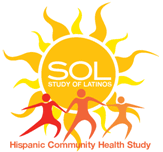| Title | Neighborhood built environments and Hispanic/Latino adults' physical activity in the U.S.: The Hispanic community health study/study of Latinos community and surrounding areas study. |
| Publication Type | Publication |
| Year | 2022 |
| Authors | Carlson JA, Sallis JF, Jankowska MM, Allison MA, Sotres-Alvarez D, Roesch SC, Steel C, Savin KL, Talavera GA, Castañeda SF, Llabre MM, Penedo FJ, Kaplan R, Mossavar-Rahmani Y, Daviglus M, Perreira KM, Gallo LC |
| Journal | Prev Med |
| Volume | 160 |
| Pagination | 107073 |
| Date Published | 2022 Jul |
| ISSN | 1096-0260 |
| Keywords | built environment, Environment Design, exercise, Hispanic or Latino, Humans, Public Health, Residence Characteristics, Walking |
| Abstract | Despite experiencing health inequities, less is known about neighborhood environments and physical activity among Hispanic/Latino adults compared to other populations. We investigated this topic in the Hispanic Community Health Study/Study of Latinos (HCHS/SOL). Hispanic/Latino adults in the San Diego, California area of the U.S. completed measures of overall moderate-to-vigorous physical activity (MVPA) via accelerometry and domain-specific MVPA via questionnaire at Visits 1 (2008-2011; n = 4086) and 2 (2014-2017; n = 1776), ~6 years apart. 800-m home neighborhood buffers were used to create objective measures of residential, intersection, and retail density, bus/trolley stops, greenness, parks, and recreation area at Visit 1. Regression models tested the association of each neighborhood feature with MVPA at Visit 1 and over 6 years, adjusting for individual characteristics and neighborhood socioeconomic deprivation. At Visit 1, those in neighborhoods with higher vs. lower retail density or recreation area (+1 vs. -1 standard deviation from the mean) engaged in 10% more overall MVPA and 12-22% more active transportation. Those in neighborhoods with higher vs. lower residential density engaged in 22% more active transportation. Those in neighborhoods with higher vs. lower greenness and park count engaged in 14-16% more recreational MVPA. Neighborhood features were unassociated with changes in MVPA over 6 years. Although changes in MVPA over time were similar across neighborhoods, Hispanic/Latino adults living in neighborhoods with design features supportive of walking and recreational activity (e.g., greater residential and retail density, more parks and recreation facilities) were consistently more active. Improving neighborhood environments appears important for supporting physical activity among Hispanic/Latino adults. |
| DOI | 10.1016/j.ypmed.2022.107073 |
| Alternate Journal | Prev Med |
| PubMed ID | 35513129 |
| PubMed Central ID | PMC9756587 |
| Grant List | R01 HL146132 / HL / NHLBI NIH HHS / United States R01 DK106209 / DK / NIDDK NIH HHS / United States N01HC65236 / HL / NHLBI NIH HHS / United States N01HC65235 / HL / NHLBI NIH HHS / United States N01HC65234 / HL / NHLBI NIH HHS / United States N01HC65233 / HL / NHLBI NIH HHS / United States T32 HL079891 / HL / NHLBI NIH HHS / United States N01HC65237 / HL / NHLBI NIH HHS / United States UL1 TR002556 / TR / NCATS NIH HHS / United States R01 HL136266 / HL / NHLBI NIH HHS / United States |
Neighborhood built environments and Hispanic/Latino adults' physical activity in the U.S.: The Hispanic community health study/study of Latinos community and surrounding areas study.
MS#:
0912
ECI:
Manuscript Affiliation:
Field Center: San Diego (San Diego State University)
Manuscript Status:
Published
